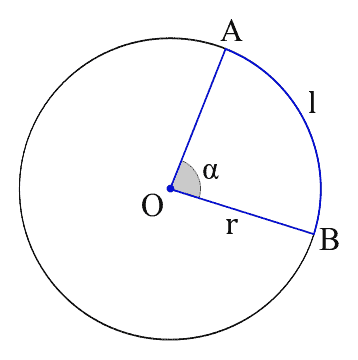Learn through the super-clean Baeldung Pro experience:
>> Membership and Baeldung Pro.
No ads, dark-mode and 6 months free of IntelliJ Idea Ultimate to start with.
Last updated: March 18, 2024
In this tutorial, we’ll review two standard angular units: the degree and the radian. First, we’ll provide their mathematical definitions. Then, we’ll explain how to convert radians to degrees and vice versa.
The degree is a unit of angular measurement defined as 1/360 of a round angle. It isn’t the recommended angle unit in the International System of Units (SI) but is commonly used in geometry. The symbol denotes the degree unit.
The precise reason behind selecting degrees as the unit of measurement for rotations and angles remains uncertain. One hypothesis suggests a connection to the fact that 360 is roughly the number of days in a year.
The radian is the angular unit in the SI. To define the measure of angles in radians, we consider a circumference with center and radius
. Let’s observe an angle
in the center. Such an angle subtends an arc
of length
:

The ratio of the arc length and the radius
represents the measure of the angle
expressed in radians, i.e.:
(1)
Being the ratio between two lengths, the radian is a dimensionless quantity.
We can see its meaning in its definition. If we consider an angle equal to 1 radian, the corresponding arc length will equal the radius:
(2)
In other words, the radian is the angle subtended at the center of a circle by an arc whose length is equal to the circle’s radius.
The symbol denotes the radian unit, but angles without any specified unit are generally assumed in radians.
The following mathematical proportion is fundamental for the conversion between radians and degrees:
(3)
where denotes an angle expressed in radians and
the corresponding one expressed in degrees.
Given the angle in radians , the corresponding angle in degrees can be calculated as:
(4)
Conversely, to convert an angle in degrees to radians we compute:
(5)
Now, let’s express the angle of 1 in degrees:
Similarly, let’s convert to radians:
Whether to use radians or degrees to express angles depends on the context.
In everyday life, people prefer degrees to radians. Also, degrees are more common when dealing with angles related to building and design in fields such as engineering, construction, and architecture. The degree is also the standard unit for measuring latitude and longitude in geography.
However, radians can simplify many mathematical formulas and calculations. So, we use them more often in physics and trigonometry. For example, the radian is the natural unit for measuring angles when working with circular motion.
In this article, we reviewed the mathematical definitions of the degree and radian, the most common units for angular measurement in geometry. We explained that a simple mathematical proportion allows us to convert radians to degrees and vice versa. Radians are SI units for angles and are more used in maths and physics, whereas we prefer degrees in other fields and everyday life.